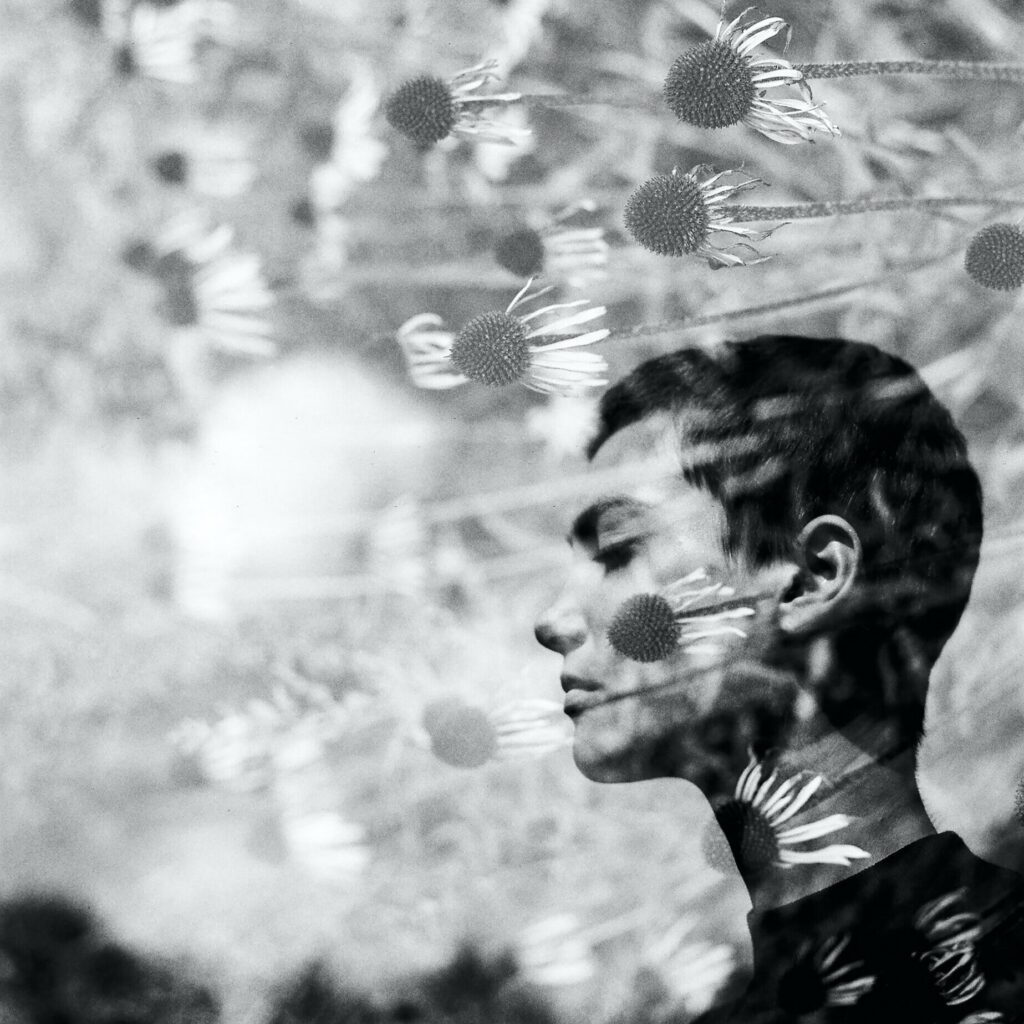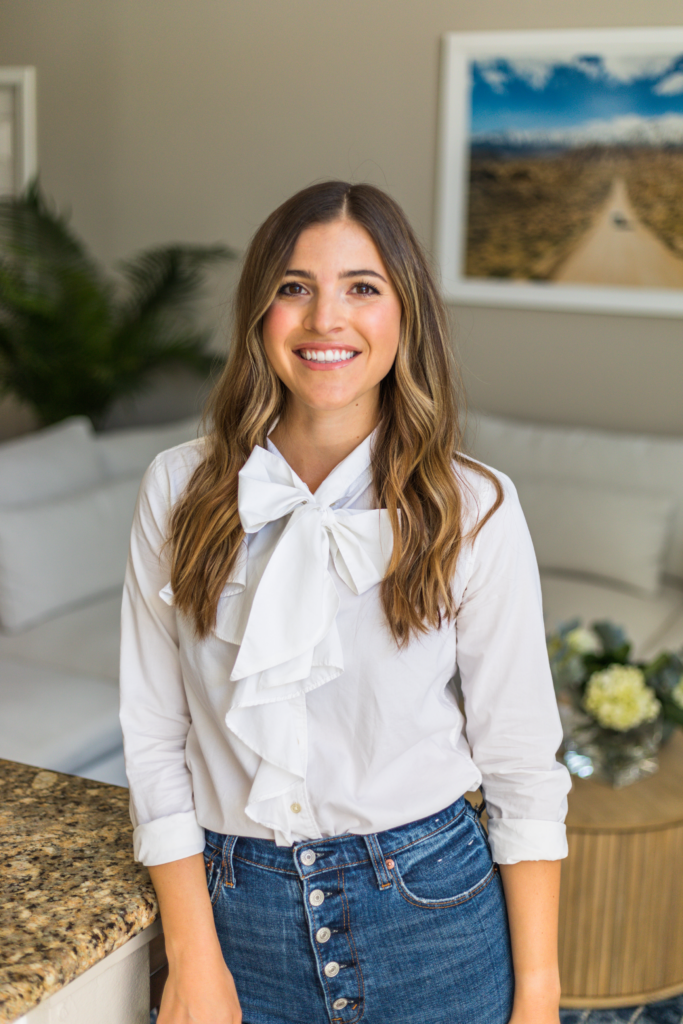


We often talk about a lot of therapeutic techniques, from cognitive behavioral therapy, to psychodynamic therapy, but today, we’re talking about one of my favorite tools to support your mental health. As a holistic therapist who specializes in working with Gen Z and Millennial women struggling with anxiety disorders, I LOVE talking about mindfulness.
If you’ve been paying attention recently, chances are you have heard someone talking about mindfulness. It’s incredibly helpful, yet often misunderstood. So today I thought I’d share why developing a mindfulness practice is more than just a trend—it’s an invaluable tool to ease anxiety.
Now, if you’ve scrolled through Instagram or flipped through a wellness magazine, you’ve probably seen the word “mindfulness” accompanied by pictures of serene landscapes or individuals lost in a peaceful meditation pose. But let’s get real for a second: mindfulness isn’t about achieving a perpetual state of Zen. It’s about being aware of your thoughts and feelings without getting wrapped up in them. Think of it as becoming an observant bystander in your own mind.
If you’re someone who struggles with a generalized anxiety disorder or just anxiety in general, your mind is often your own frenemy. It tosses you hypotheticals, worst-case scenarios, and self-doubt like confetti at a New Year’s Eve party. This mental chaos can be EXHAUSTING.
That’s where mindfulness comes in. Practicing mindfulness exercises can be like hitting the pause button, offering you a moment to catch your breath and reassess your own thoughts and emotions. It’s a beautiful way to shift out of the sympathetic nervous system (responsible for fight, flight or freeze) and shift into the parasympathetic nervous system (responsible rest and digest) at any point in the day.
Mindfulness, at its core, is about paying attention to the present moment in a non-judgmental manner. Over time, practicing mindfulness can foster a heightened awareness of your internal and external experiences, and can offer a multitude of therapeutic benefits, especially for those grappling with anxiety. Let’s delve into how practicing mindfulness techniques can assists in alleviating anxiety:
Breaking the Cycle of Rumination: One of the hallmarks of anxiety is the tendency to ruminate or overthink. By focusing on the present moment, mindfulness helps break the cycle of dwelling on past events or worrying about future possibilities.
Response vs. Reaction: Mindfulness allows you to observe your feelings and thoughts without immediately reacting to them. This offers an opportunity to choose a response, rather than impulsively reacting to triggers.
Increased Self-awareness: Regular mindfulness practices help you become more tuned in to your emotional states and patterns. This awareness can help identify potential triggers and early signs of anxiety, making them easier to address before they escalate.
Reducing Stress: Mindfulness meditation has been shown to reduce the production of cortisol, the body’s primary stress hormone. Less cortisol can mean a reduced feeling of stress and anxiety.
Acceptance of Uncertainty: One of the major factors contributing to anxiety is an aversion to uncertainty. Mindfulness encourages acceptance of the present moment, however uncertain or uncomfortable. This acceptance of the present moment, helps reduce the anxiety that arises from wanting circumstances to be different than they are.
Body Awareness: Anxiety isn’t just a mental experience; there can be physical sensations related to it like rapid heartbeat, shallow breathing, or muscle tension. Mindfulness helps you recognize these physical signs early on and use grounding techniques to calm the body down.
Neurological Benefits: Research using neuroimaging has shown that mindfulness practices can lead to changes in brain structures related to attention, emotion regulation, and self-awareness. Over time, these changes can contribute to a reduction in anxiety symptoms.
Enhanced Emotional Regulation: By recognizing and labeling emotions without becoming overwhelmed by them, you can better regulate your emotional responses. You learn to allow feelings to come and go without being swept away by them.
Improved Concentration: Anxiety often makes it hard for us to focus. Mindfulness practices, like meditation can enhance concentration by training the mind to return to a focal point (like breath or a mantra) when it starts to wander.
Promotes a Positive Outlook: By focusing on the present and letting go of judgment, many people find that they naturally adopt a more positive or neutral outlook on life, rather than jumping to negative conclusions.
Enhanced Resilience: Regular mindfulness practice can bolster resilience, enabling you to bounce back more quickly from distressing events or setbacks that might typically provoke anxiety.
The 3 A’s of Mindfulness is a framework that summarizes the core elements of a mindfulness practice. While different teachers and traditions might use various terms or concepts, the 3 A’s simplifies them into three digestible components: Awareness, Acceptance, and Action. Let’s delve deeper into each one:
Awareness is the cornerstone of mindfulness. It refers to the practice of paying attention to the present moment intentionally. This includes:
Once we have cultivated awareness, the next step is to foster an attitude of acceptance.
While mindfulness often emphasizes being rather than doing, that doesn’t mean it’s passive. In fact, cultivating awareness and acceptance often naturally leads to action.
In essence, the 3 A’s of Mindfulness can serve as a roadmap for anyone looking to incorporate mindfulness into their daily lives. Whether you’re new to mindfulness practices or have been meditating for years, reflecting on these three components can deepen your understanding and enhance the benefits you derive from being mindful.
Mindfulness, as a therapeutic approach for anxiety, encompasses various techniques and practices. Here’s a list of some of my favorite widely recognized mindfulness-based interventions and practices specifically designed or commonly used to address anxiety:

Mindfulness is an effective way to counteract the symptoms of anxiety by anchoring yourself in the present moment. Below I’m diving into some of my favorite mindfulness exercises for anxiety.
Focus on Your Breath: Find a comfortable place to sit or lie down. Close your eyes and start to focus on your breathing. Notice how the air feels as it enters and exits your nostrils or moves down your throat. Don’t try to change your breathing, simply observe.
Counted Breathing: To help keep your focus, you can use counted breathing exercises for anxiety. Inhale for a count of four, hold for a count of four, exhale for a count of four, and then pause for a same count. This technique can help anchor your mind.
A body scan meditation is a key component of Mindfulness Based Stress Reduction which we briefly talked about above.
Find a comfortable seat, close your eyes if that fees comfortable. Take a few deep breaths. Once you feel ready, bring your attention to the bottom of the feet and move your attention slowly up through your body. Notice any physical sensations that arise as you scan through each individual body part. Are there areas of tension? Or perhaps areas that feel particularly relaxed? This mindfulness practice helps connect you with physical sensations and diverts attention from anxious thoughts.
The 5-4-3-2-1 method is particularly effective. Here’s how it works:
This method helps pull your attention away from future-based anxious thoughts and back into the more present moment awareness.
Pick an object in your environment and focus all your attention on it. It could be a flower, a painting, or even your own hand. Observe it as if you’re seeing it for the first time. Notice its colors, textures, size, and other attributes. If your mind wanders to anxious thoughts, gently bring your focus back to the object.
Listen to some music or sounds of nature (like rain or waves) without trying to do anything else at the same time. Really listen. Try to pick up on nuances or instruments or sounds that you hadn’t noticed before.
Choose a meal or snack to eat mindfully. This involves fully focusing on the experience of eating: the flavors, textures, and smells of your food. Notice how it feels to chew and swallow. This can transform a mundane task into a mindful moment and can serve as a distraction from anxiety.
Take a few minutes to sit comfortably and focus entirely on your breath. Inhale, hold for a few seconds, and exhale. If your mind starts to wander (and it will!), gently guide it back to your breath.
Remember that mindfulness is about observing without judgment. If you notice feelings of anxiety, acknowledge them without criticism. Labeling your feelings neutrally can be a really helpful way to practice mindfulness, e.g., “I’m noticing feelings of anxiety right now.”
The more you practice mindfulness, the easier it becomes to tap into when you’re feeling anxious. Consider setting aside a few minutes each day for a mindfulness meditation or activity. This could be something as simple as mindful breathing exercises.
A less intimidating way to get started with practicing mindfulness is to use one of the many apps or guided meditations on the market. Several apps and online platforms offer guided meditations specifically designed for anxiety. These can be particularly useful for beginners or those who prefer some direction during their practice.
Sometimes, having a group or structured class can help in maintaining regularity and discipline in the practice. It can also offer a supportive community to share experiences and learn from each other.
In conclusion, these mindfulness techniques can be a powerful tool in managing and reducing anxiety. It’s not about eliminating or suppressing anxious thoughts, but rather about changing our relationship with those thoughts. Over time, with consistent practice, you may find that these techniques help create a buffer against daily anxieties.
Haha, no, you don’t need to abandon your current life to live in the forest, meditating all day. Mindfulness is a practice you can incorporate into your daily life and routine. Even dedicating just 5 minutes a day can make a significant difference.
The frequency and duration of a mindfulness practice can vary among individuals, and its effectiveness in reducing anxiety symptoms can depend on several factors including the depth of practice, your predisposition, and the nature of the anxiety. However, some general guidelines and insights can be helpful:

Daily Short Practices: It’s often suggested that beginning with shorter, daily practices can be more beneficial than less frequent, extended sessions. Even just 5-10 minutes daily of focused mindfulness meditation can start making a difference over time.
Consistency is Key: Like any skill, mindfulness improves with consistent practice. Many people find that they start to notice a reduction in anxiety symptoms after a few weeks of daily practice. However, the benefits might be subtle at first—perhaps a slightly improved mood or a better night’s sleep—before becoming more apparent.
Incorporate Mindfulness Throughout the Day: Apart from dedicated meditation sessions, try to incorporate mindfulness into daily activities. This can include mindful eating, mindful breathing, walking, or even washing dishes. These “mini practices” can reinforce the habit of being present.
Guided Meditations: If you’re new to mindfulness, guided meditations—available on various apps and websites—can be beneficial. They often come in varying lengths, from 3 minutes to an hour, allowing you to choose based on your schedule and comfort.
Individual Variability: Remember, everyone is different. Some people might notice significant reductions in anxiety after a few weeks, while others might take a few months. It’s crucial to be patient with yourself and recognize the small improvements along the way.
Additional Support: If you’re dealing with severe anxiety, it’s essential to consider other therapeutic interventions alongside mindfulness, such as cognitive-behavioral therapy or medication. In such cases, mindfulness can be a complementary practice. Working with a therapist who is trained in mindfulness can be such a beautiful way to support yourself.
Check-in with Yourself: After a few months of consistent practice, evaluate your anxiety levels. Reflect on whether there have been situations you handled more calmly than you might have before or if certain triggers seem less intense.
Stay Updated: As with any field, new research and methodologies are continually emerging in mindfulness practices. It’s helpful to stay updated and perhaps even attend refresher courses or workshops.

Mindfulness is a journey—some days will be better than others, and that’s okay. If you struggle with anxiety and are looking for more holistic approaches to easing anxiety, mindfulness can be an amazing tool. While daily practice is often recommended for noticeable changes in anxiety levels, it’s essential to find a routine that feels sustainable for you. Over time, as mindfulness becomes an integral part of your lifestyle, its benefits will likely extend beyond just reducing anxiety to improving overall well-being.
If you found this helpful and are looking for a holistic therapist, I offer virtual therapy to anyone living in the state of California. I love working with women to develop habits to support you through better navigating anxiety, life-transitions and relationships. You can learn more about me and my approach here.
Thanks so much for taking the time to read this. As with anything I share, take what you need and leave the rest!
Remember: this post is for informational purposes only and may not be the best fit for you and your personal situation. It shall not be construed as legal, financial, or medical advice. The information and education provided here is not intended or implied to supplement or replace professional advice of your own attorney, accountant, physician, or financial advisor. Always check with your own physician, attorney, financial advisor, accountant, or other business or medical professional before trying or implementing any information read here.


Holistic Therapist, Nutritional Therapy Practitioner and Yoga Instructor in Elk Grove, California.
© Copyright 2024 That’s so well. All Rights Reserved. LICENSED MARRIAGE AND FAMILY THERAPIST #107356. DISCLAIMER. PRIVACY PRACTICES. TERMS AND CONDITIONS. Website by Chloe Creative. 9727 Elk Grove Florin Road, Elk Grove Ca 95624